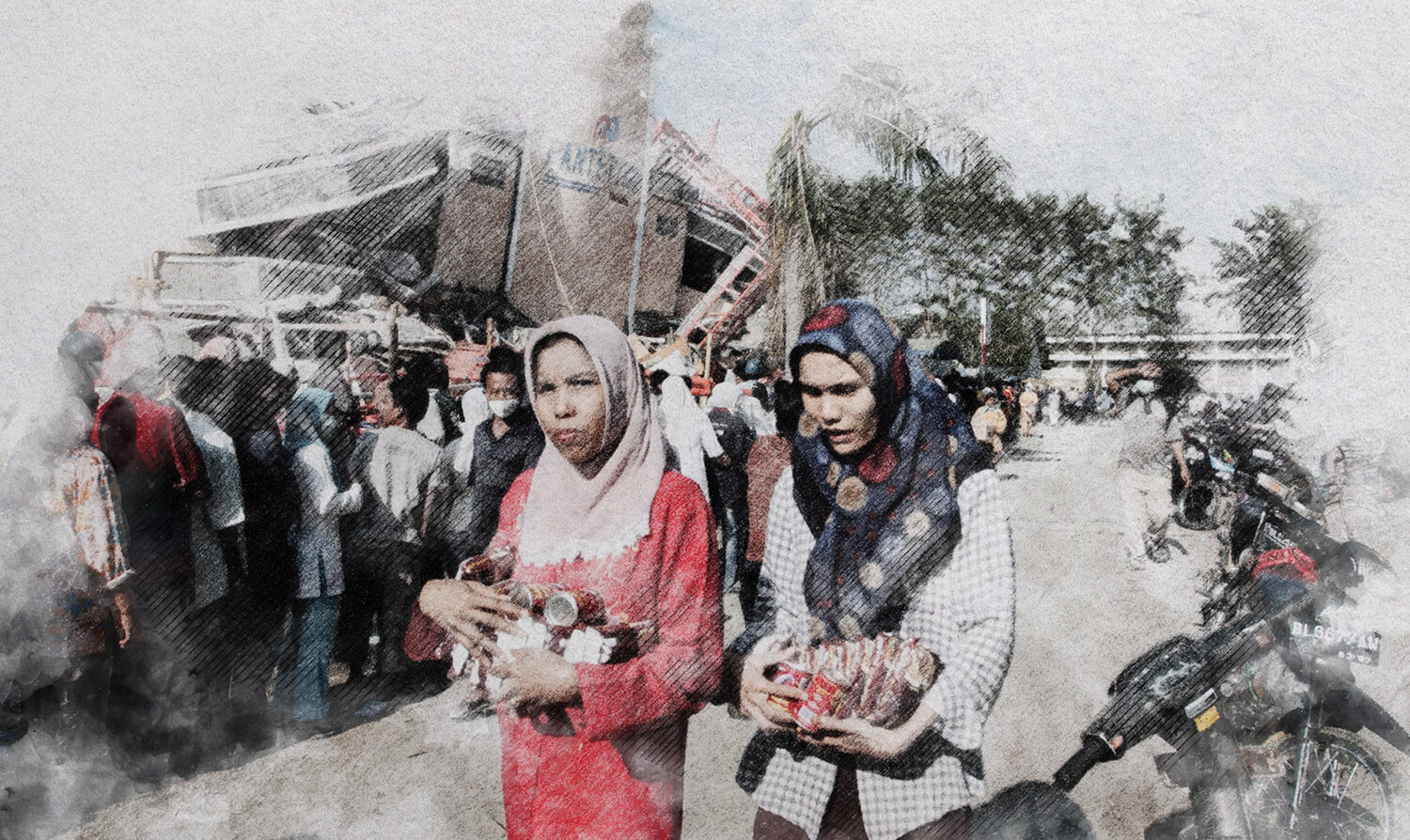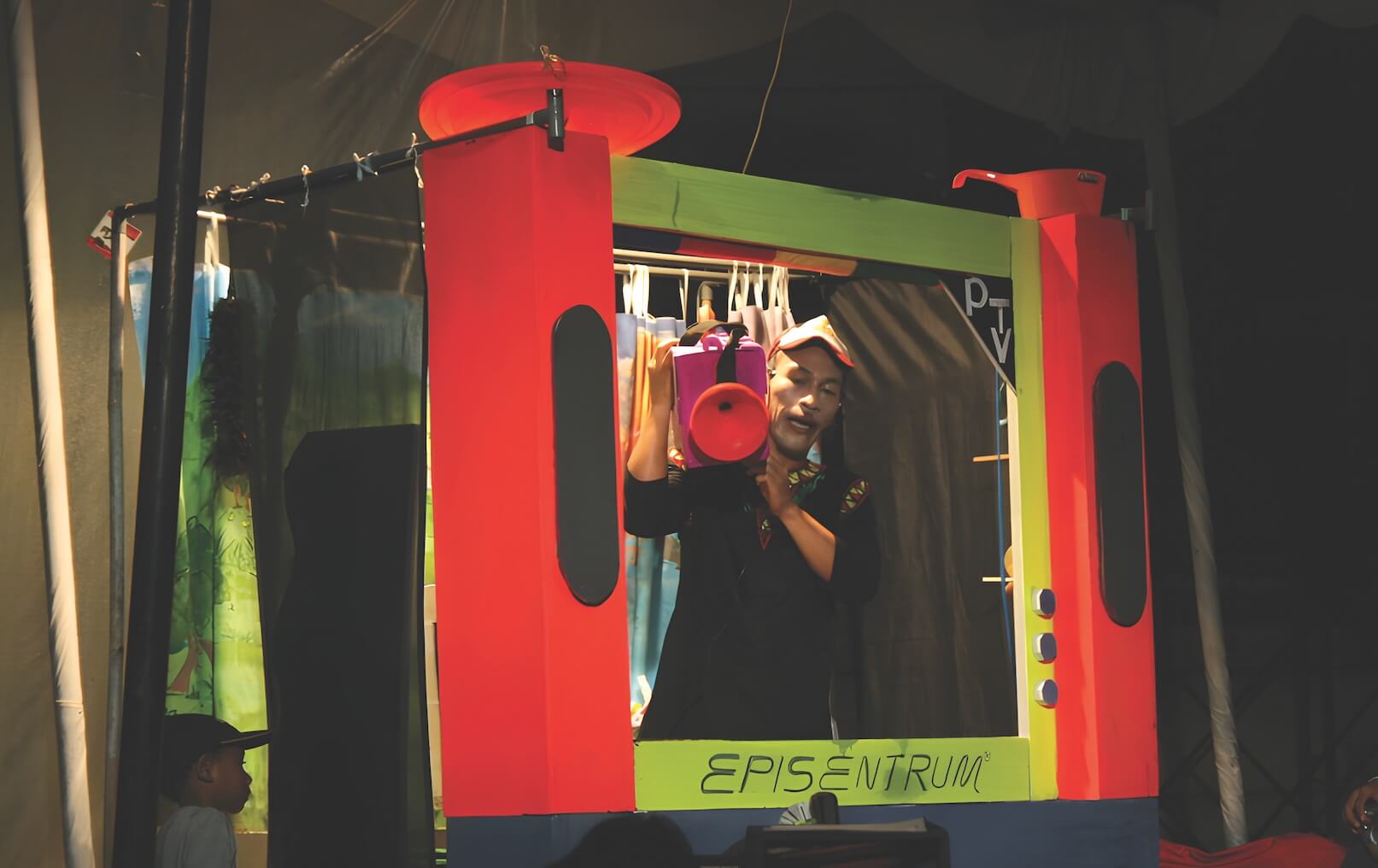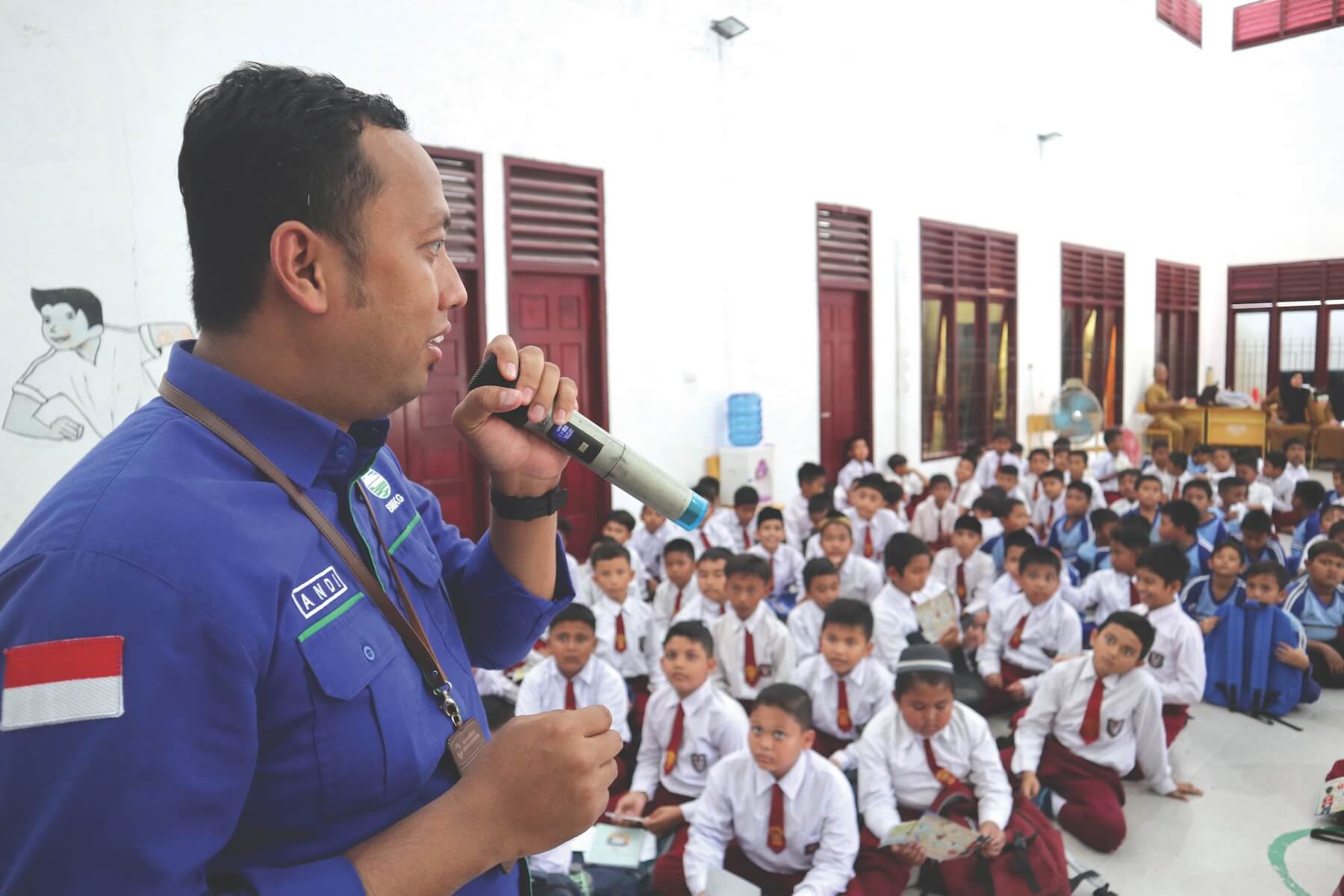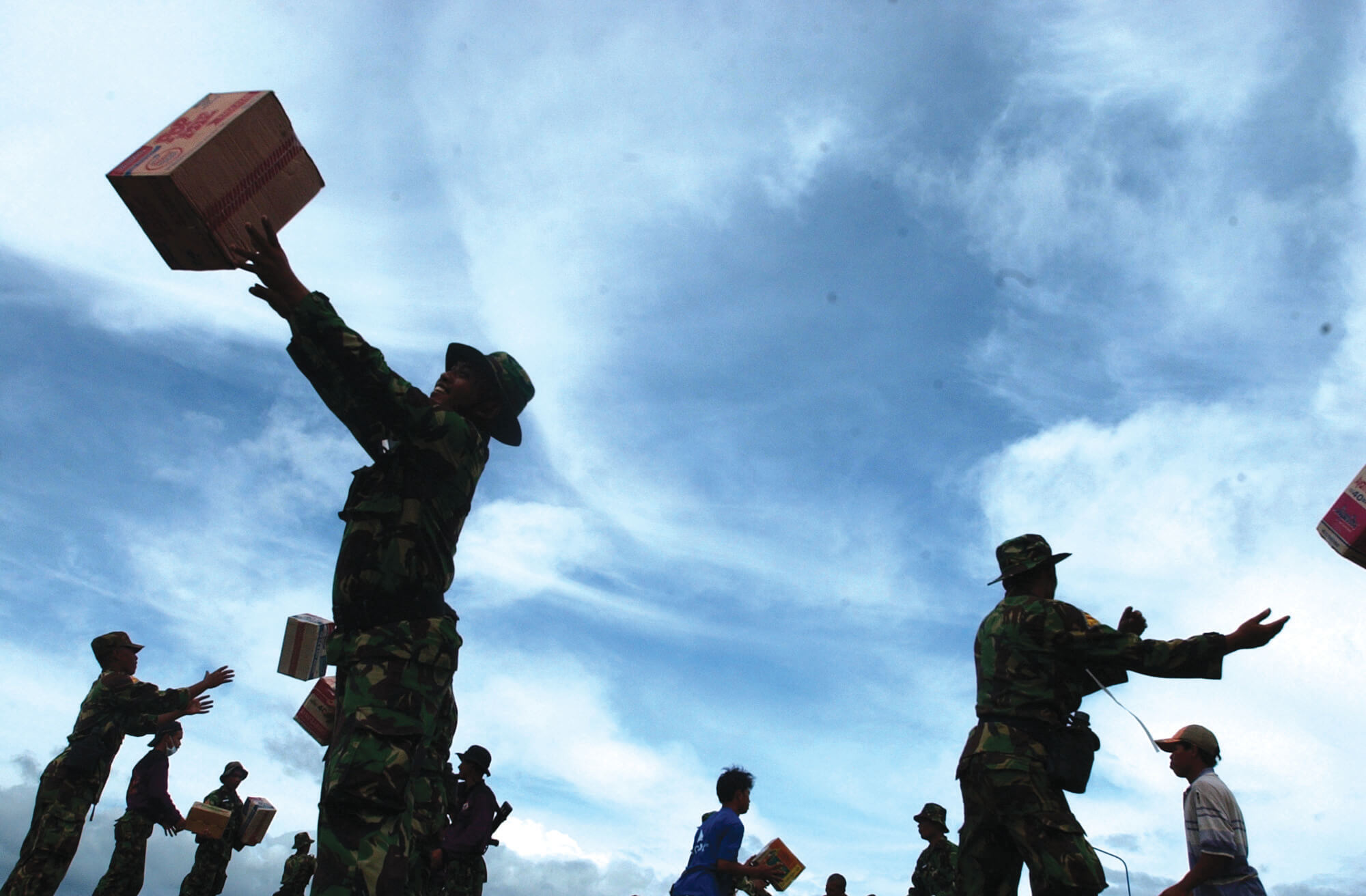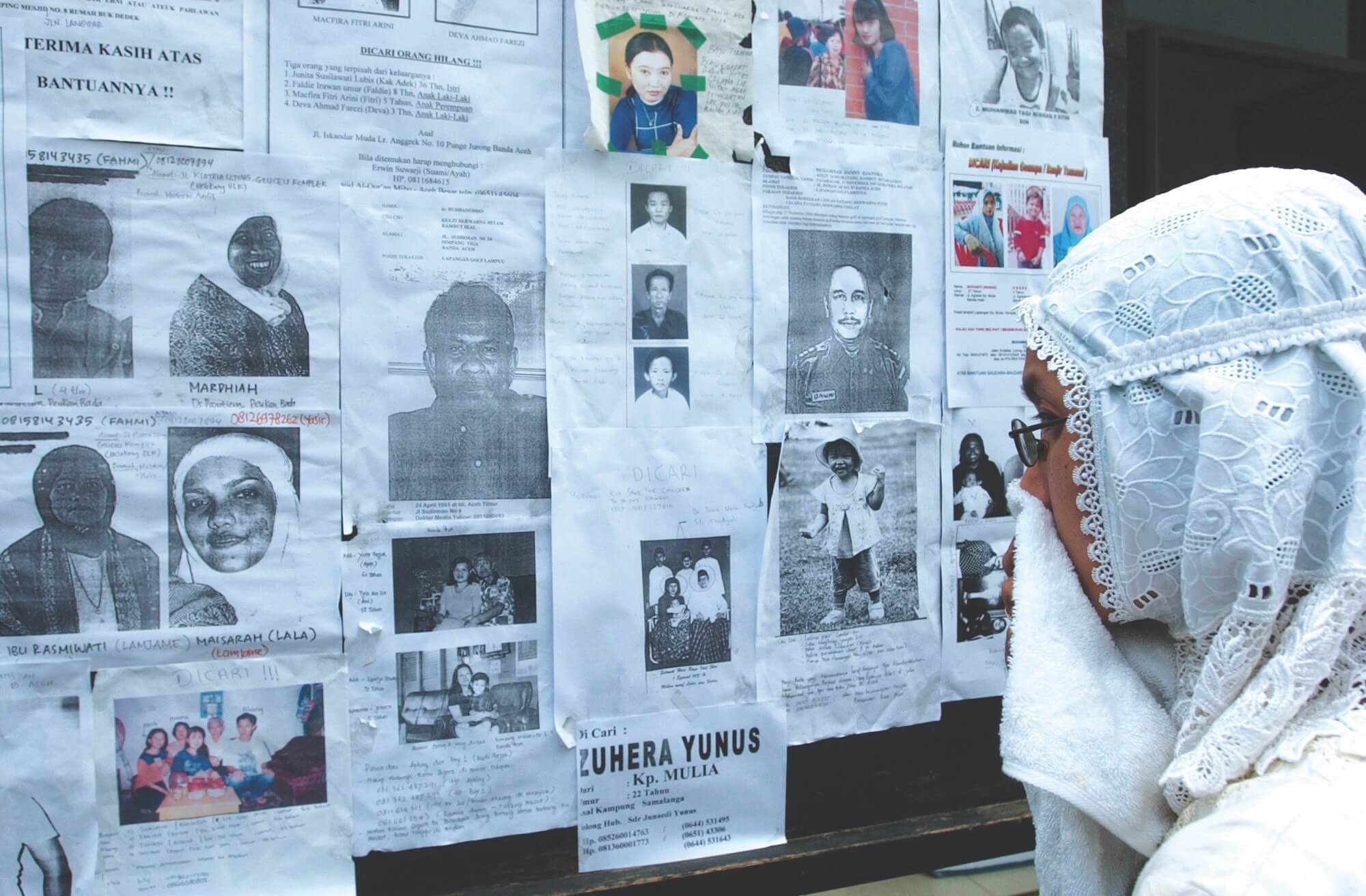
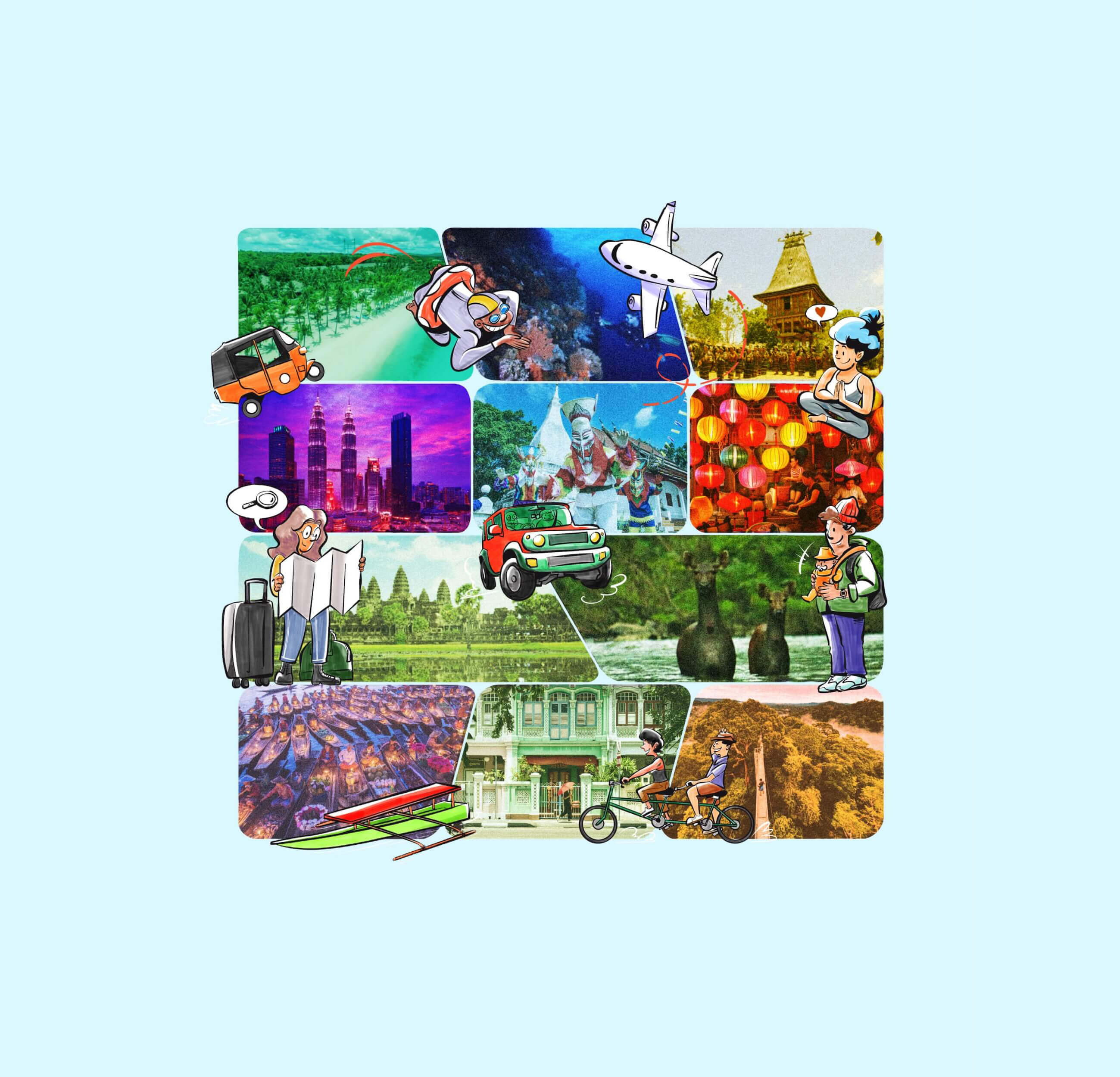


The Indian Ocean Tsunami flattened the coastal communities of Aceh, North Sumatra, killing more than 170,000 people. At least 116,000 are listed as missing.
In this section, five survivors share their experiences from the harrowing day of 26 December 2004, how they dealt with the trauma of losing family members, neighbours, and friends, and how the tsunami changed their lives.
The narratives are based on interviews conducted by the UN Development Programme (UNDP) through its regional Tsunami Project in July 2024, as part of a joint ASEAN-UNDP publication on the 20th anniversary of the Indian Ocean Tsunami. This joint ASEAN-UNDP publication will be released in December 2024.
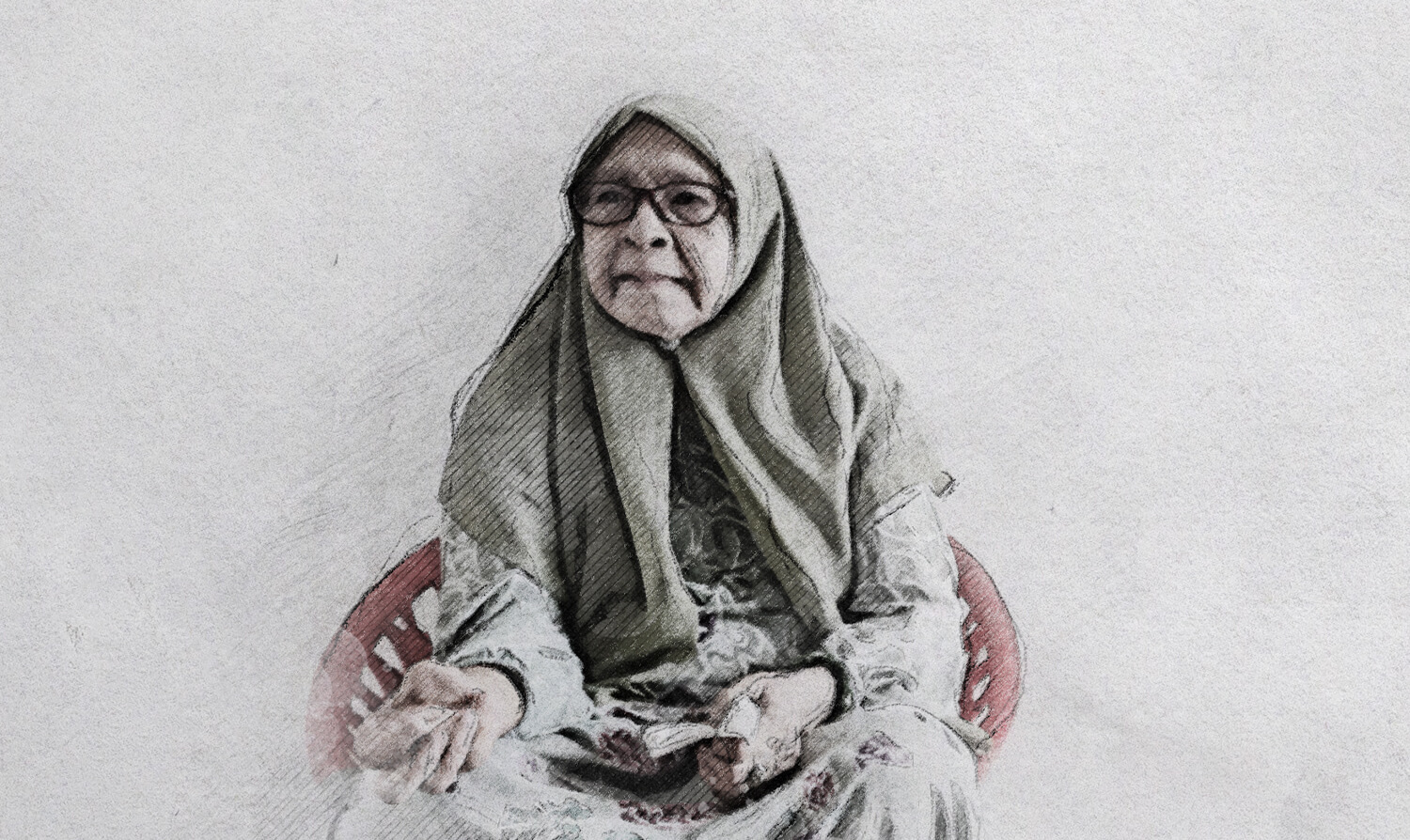
Cut Sa’adah
When the tsunami struck, I was around 65 years old. That morning, I was with my extended family at a relative’s house in Meulaboh for a family event. We were getting ready to return to Banda Aceh, and I had packed a backpack with clothes. Suddenly, a powerful earthquake shook the ground so violently that I could barely stand. It felt like the end of the world.
Soon after, someone shouted, “Everyone run, the sea water is rising!” Instantly, everyone fled the house. Being older, I was the slowest, and before I realised it, I was alone. I took a shortcut through the back of the house, hoping to catch up with those who had run ahead. I ran barefoot, even though my feet were still aching from a recent hip surgery, and ended up cutting myself on sharp objects.
In the past, my parents used to tell me about a term called “Air Beunah.” Air Beunah refers to a massive flood. This term has been passed down from our ancestors, but we don’t know its exact origins.
As I fled, I kept my eyes forward and didn’t look back. People I was fleeing with urged me to climb a higher hill. When I got there, they urged me to go even higher. Looking back, I witnessed a terrifying scene: debris, including mosque domes, was being swept away by the rising waters. The water rose swiftly, nearly reaching where I was, so I kept climbing, clinging to tree branches for support. From the top, I could see that the land below was entirely submerged. Amid the destruction, I marvelled at God’s power, astonished at how I managed to climb the steep hill. Overcome with emotion, I cried and prayed in gratitude.
I stayed on the hill for three days, fasting the entire time. With no electricity and limited clean water, some people went down to search for food and shared whatever they found. I saw them find rice mixed with sand, which they dried and cooked for us. We were desperately hungry, and the children suffered from diarrhea. We all gathered at a transmitter station, where we waited in line for instant noodles and other food supplies. I received three pieces of bread, gave away two to others, and kept one for myself.
On the fourth day, around 9 a.m., we decided to leave the hill and take a fishing boat to the refugee area in Banda Aceh. The boat had survived because fishermen noticed the darkened land from a distance. Soldiers helped us board, prioritising women first. It was extremely crowded, and I could barely sit upright. The journey was terrifying as we navigated through debris, and by 11 p.m., we arrived in Lampulo village. Since it was too late to continue, we spent the night on the boat, extremely hungry and shivering in the cold and darkness.
On the fifth day, we walked to the Darussalam Mosque. On the boat with me was a relative whose wife and mother-in-law were killed and whose house was destroyed. His child was missing. When we reached the mosque, he frantically searched for his child among the tsunami survivors. calling out his name. Hearing this, his child ran to him, limping with a severed leg. The reunion was heart-wrenching as the father embraced his child with relief and gratitude. We learned that the child had survived by clinging to a refrigerator door carried by the current until he reached the mosque.
On the sixth day, at 1 a.m., we were taken to the airport to be flown to Medan (City in North Sumatra).
When I used to recount these events, I would feel sad and cry. Now, I am able to share this story with you all.
After the tsunami, NGOs and the government provided housing aid to disaster victims. By the time the aid arrived, I was already in Medan, far from Aceh. I worried about missing out on the assistance and inquired if I could still receive it. Thankfully, they provided aid. Although the house was small, it served as a temporary accommodation for my child when she went back to Aceh to collect the aid.
Until now, we have never returned to our original home that was destroyed by the tsunami. The disaster changed our lives completely. We decided to move to a higher area to avoid similar risks in the future. In addition to the temporary housing we received, we found a very helpful programme: cake-making training. This programme, a collaboration between NGOs and the government, was designed specifically for widows in our community. It provided not only new skills but also some relief from the burdens they faced after their immense losses. There is a disaster simulation programme conducted every few years to prepare the community for potential emergencies. Additionally, there is a disaster siren system installed in various strategic locations.
The tsunami was a deeply painful experience that left a lasting impact on my life. However, through all the difficulties, I learned to appreciate God’s blessings more. This traumatic event taught me how to deal with disasters and take action to protect myself. Now, I feel more prepared to face challenges, thanks to the invaluable lessons I’ve learned from the hardships we endured in Aceh.
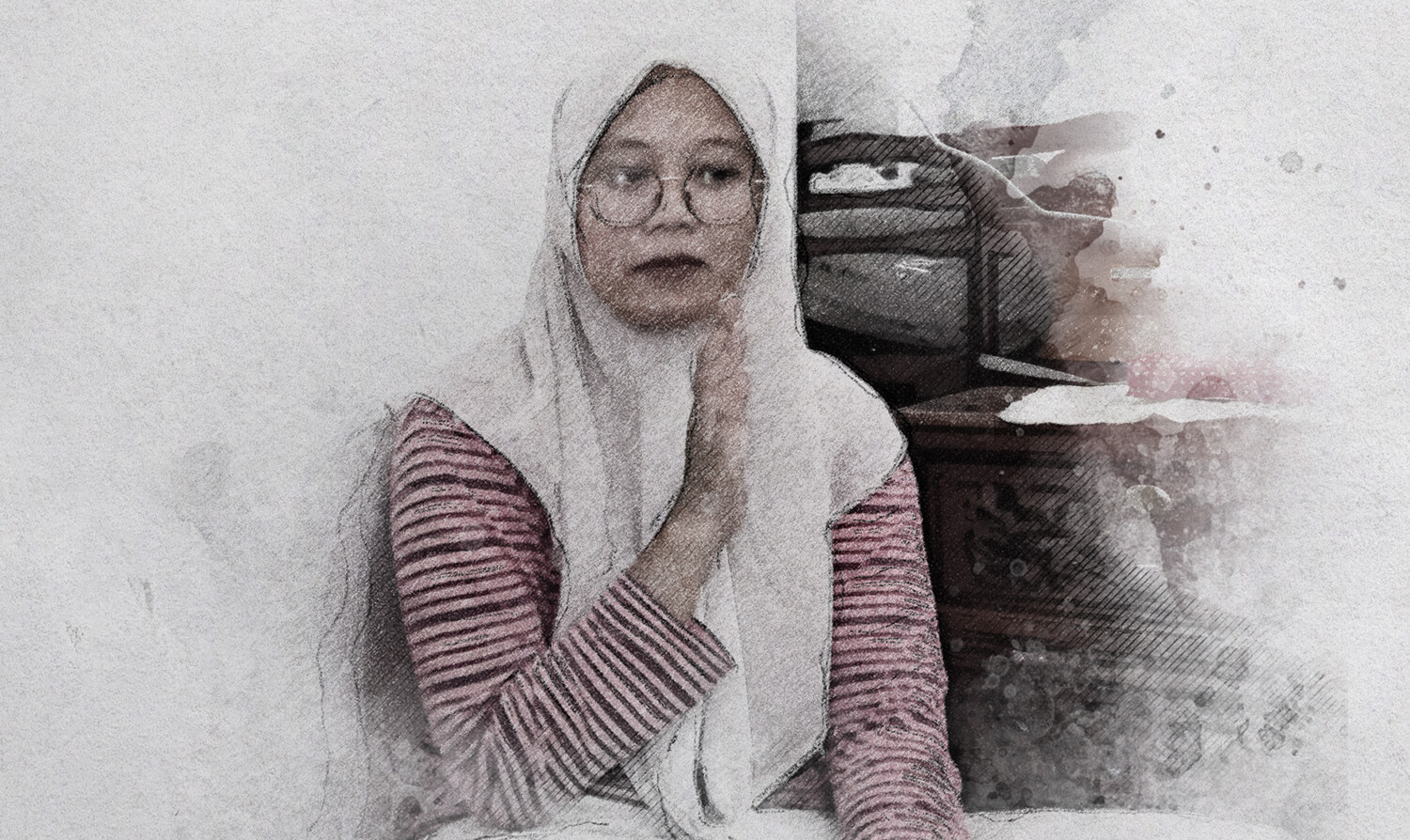
Azzahra Layusa
We lived in the Punge Jurong area, where my six siblings and I grew up together. At the time of the disaster, I was around 21 years old. It was a Sunday, and I was relaxing with my family at home. Suddenly, a powerful earthquake shook our area. Although our house was about 5 kilometres from the coast, that distance didn’t shield us from the devastating effects of the earthquake and the ensuing tsunami. We quickly rushed outside to the yard, seeking a safer place. I saw many people running in panic while others stood frozen, trying to understand what was happening. I had never experienced such a strong earthquake before, and the effects were immediate—I felt dizzy and confused.
Then I heard people around me shouting in panic, “The water is rising, the water is rising!” At that moment, I didn’t fully understand what was happening. I had never even heard of a tsunami before. But seeing people running in fear, my instincts told me to run too, even though my parents were still inside the house. I ran aimlessly, overwhelmed by confusion and fear, until I was eventually swept away by the powerful current. It felt like walking in the middle of waves that suddenly grew and hit mercilessly.
Swimming was futile; the water was not only powerful but also filled with sharp and dangerous objects like sheets of metal and debris from buildings. Every movement was risky, and I had to struggle hard to stay afloat amidst the chaos. Fortunately, I got caught on a mattress that was floating with the waves. Around me, I heard people shouting for help, but I was in shock, not knowing what to do. I could only wonder, “Where am I? What is really happening?”
Amid the chaos, I briefly saw a few two-story houses still standing amidst the debris. The survivors who had managed to reach the second floor were shouting, calling out to those still floating to come and save themselves. The strong current carried me about a kilometre, until I eventually washed up on a field. Somehow, I escaped that situation without injuries, which felt like an incredible stroke of luck. However, once the water receded, the sight was truly horrifying. I saw corpses stuck on doorways and many others swollen from being submerged during the disaster. The event left a deep scar on my memory.
From the field, I tried to find shelter by walking to the nearby Darussalam Mosque. There, people who saw my torn clothes immediately gave me a karate uniform to wear. Later, I, along with many others, took refuge in a university building that was left standing. We hoped this place would be safe from aftershocks, but the tremors continued, making us feel unsafe inside. Eventually, we all chose to sit outside in the open field for safety.
On the first day at the shelter, no aid arrived. The early days were extremely difficult. We struggled to get food and clean water. Aid started coming only a few days later, but it was still limited. I received only a few packs of biscuits. Despite the hardship, my thoughts were with my family at home. I worried about my parents and other relatives. Eventually, I decided to return home, despite many roads being blocked. I walked through debris with water up to my chest, starting at 9 a.m. and continuing until 1 p.m., barefoot. I could only pray that my feet would remain unharmed.
When I finally arrived home, the sight was heart-wrenching. My house was still standing, but much of it was destroyed and surrounded by trash and debris. The devastation was evident: behind my house, there were about 20 rental homes, all of which were completely demolished. Only two or three people from that entire complex survived. This stark destruction underscored the severity of the area I was in.
I learned from some relatives that my parents were gone, and their bodies could not be found. This news hit me hard. I also lost my younger siblings, my grandmother, and my niece. Everyone I loved disappeared in an instant.
A relative took me to a higher place on a motorcycle. I stayed there for several months. Due to limited food, we made various dishes from sardines to survive. Even now, I can’t eat sardines anymore because I had them so often. The recovery process took about five years. During that time, I received 18 million rupiahs in house repair aid from the government. However, this amount was not enough to repair the roof and some walls of my damaged house. After the tsunami, there were various entrepreneurship training institutions for housewives affected by the tsunami, and the programme really helped us survive. Now, it is part of my job as a government employee. Moreover, there is a natural disaster simulation programme for the community.
Amidst the deep sorrow, we knew we had to survive. If we had been trapped in trauma, Aceh wouldn’t have recovered as it has. We realised that to move forward, we needed to overcome the deep pain and trauma. This experience made me more resilient and self-reliant. After the disaster, facing life’s challenges became easier because nothing seemed harder than the tsunami.
Now, I always advise my child to hope never to experience such a disaster again. When an earthquake occurs, my family and I know how to run away from the sea. I teach children that if an earthquake happens, they must run immediately. If running isn’t possible, they should go to the second floor. I stress that material possessions are unimportant; safety and life are what matter most.
Despite trying to move on, the fear remains. Every time I see large waves at sea, that fear returns. I also feel scared when the sky is too dark or when the weather is extremely hot. It feels as though these signs might predict another disaster. These fears are now a part of my life, reminding me of the fragility and uncertainty I experienced that day.
Pipit
When I was just 10 years old, our lives changed drastically on what should have been an ordinary Sunday. Our house was situated in a relatively high area, about 4 kilometres from the coast, and we always felt safe from the threat of disasters. However, on that day, a very strong earthquake suddenly shook our region with tremendous force. The tremors made the entire house shake, and fear enveloped us.
Although our house was quite far from the coast, the impact of the earthquake and the subsequent tsunami was immense. About an hour after the earthquake, I saw many people running towards our house with pale, terrified faces, shouting in panic, “The sea water is rising, the sea water is rising!” The atmosphere became increasingly tense as some cried and ran aimlessly, as if being chased by something invisible. Amid this chaos, I noticed my aunt running while holding her young niece. With a sorrowful face, she tried to protect the little girl, who had tragically lost her mother to the tsunami. Witnessing my aunt’s distress and hearing the tragic story of her niece made me truly grasp the severity of the disaster we were facing. Initially, we thought the rising sea water was just due to ordinary flooding, but people explained that it was from giant waves of water, so massive they destroyed everything in their path.
The impact of the disaster was immense, shaking our lives to the core. In the aftermath, food and clean water were scarce, electricity was nonexistent, and the grim news of Melaboh’s destruction by the earthquake reached us. As night fell, the tremors persisted, a relentless reminder of the catastrophe that had struck. I remember watching as countless refugees sought shelter on the porches of local residents’ homes, crowding together in a desperate search for safety.
On the second day, amidst the chaos, a relative who was a teacher from Melaboh arrived. He gathered us, the children who had become refugees overnight, and explained that the world was facing three major disasters: earthquakes, flash floods, and volcanoes. As he spoke, it dawned on us that we were living through two of these disasters at once—an earthquake and a flash flood. The teacher’s words were more than just an explanation; they were an education. He wanted us to understand the nature of tsunamis, explaining that they were not just ordinary flash floods, but a dangerous force that could sweep away everything in their path. His lessons gave us a new understanding of the peril we faced, even as we struggled to comprehend the magnitude of the disaster that had upended our lives.
For the first three days, aid did not arrive, and we had to make do with whatever food we had. The adults took on the responsibility of ensuring that everyone had food and drink, managing the rations carefully. Fortunately, despite the crisis, everyone came together and shared resources, preventing any conflicts from arising. By the fourth day, our supplies were dwindling, and we were even forced to eat rotten tempeh to survive. The children, including myself, felt the severe impact of the situation.
Occasionally, helicopters would come, but they were reluctant to land for fear of being overwhelmed by desperate and frantic people. One day, a foreign journalist arrived with chocolates. All the children, me included, ran eagerly to get them. I ran barefoot and injured my feet in the scramble for the chocolates. We were extremely hungry and thirsty, while the adults carefully rationed the limited drinking water. Soon after, aid began arriving via helicopter, but supplies were dropped from the air, often resulting in damaged food upon landing. A week later, when the electricity was finally restored, we were able to see our situation on TV and began to understand what a tsunami was.
A few days after the disaster, my family and I decided to evacuate to Medan using the available refugee transport. However, we ran into significant difficulties because the roads leading to Aceh were blocked, with some areas having turned into open sea. Our journey took us through several regions that had not been affected by the tsunami, making it a gruelling and challenging trip. Once we arrived in Medan, we stayed in a rented house for a month while we waited to return home and assess the damage. When we finally went back, I was deeply traumatised to see my school destroyed and covered in mud. The devastation was overwhelming. As a result of the disaster, four elementary schools in our area had been merged into one because so many students had died. Many children became orphans and were either taken in by their families or adopted.
One day, I reunited with my elementary school friends and learned that they had continued their education in refugee tents for a year. Some of them still carry deep trauma from the experience. With our home and school in ruins, we decided to remain in Medan longer and continue our schooling there. We returned to Medan on a C-130 Hercules plane, and I will never forget the sight of the tsunami-affected areas, covered in black mud, and the horrific smell of decaying corpses and mud. Those memories continue to be deeply traumatic for me.
The tsunami also had a significant impact on the factory where my mother worked, causing it to cease operations until 2011. My mother had to stop working during that period. Fortunately, we received adequate economic aid and special assistance for tsunami victims, which helped us cope with the situation. Additionally, my mother started selling snacks to make a living.
In the aftermath of the tsunami, a disaster mitigation centre was relocated to Syiah Kuala University. Education on disaster preparedness increased significantly, and natural disaster simulations are now held every few years to commemorate the tsunami. Residents are informed in advance about these simulations, ensuring they understand it is a drill and participate effectively. Moreover, many of my friends received scholarships to study in Japan, focusing on fields related to tsunamis, such as hydrology.
Interestingly, many people living in coastal areas are newcomers, as the original residents have relocated to higher ground or other cities to avoid future disasters. Our family is no exception; we now choose to live in higher areas far from the coast. My husband and I have agreed that if a tsunami were to occur again, we would not return home but would immediately seek higher ground. We have prepared a backpack with essential documents wrapped in plastic, so we can quickly grab it if a disaster strikes. We are also aware that tsunamis can originate from rivers, not just the sea.
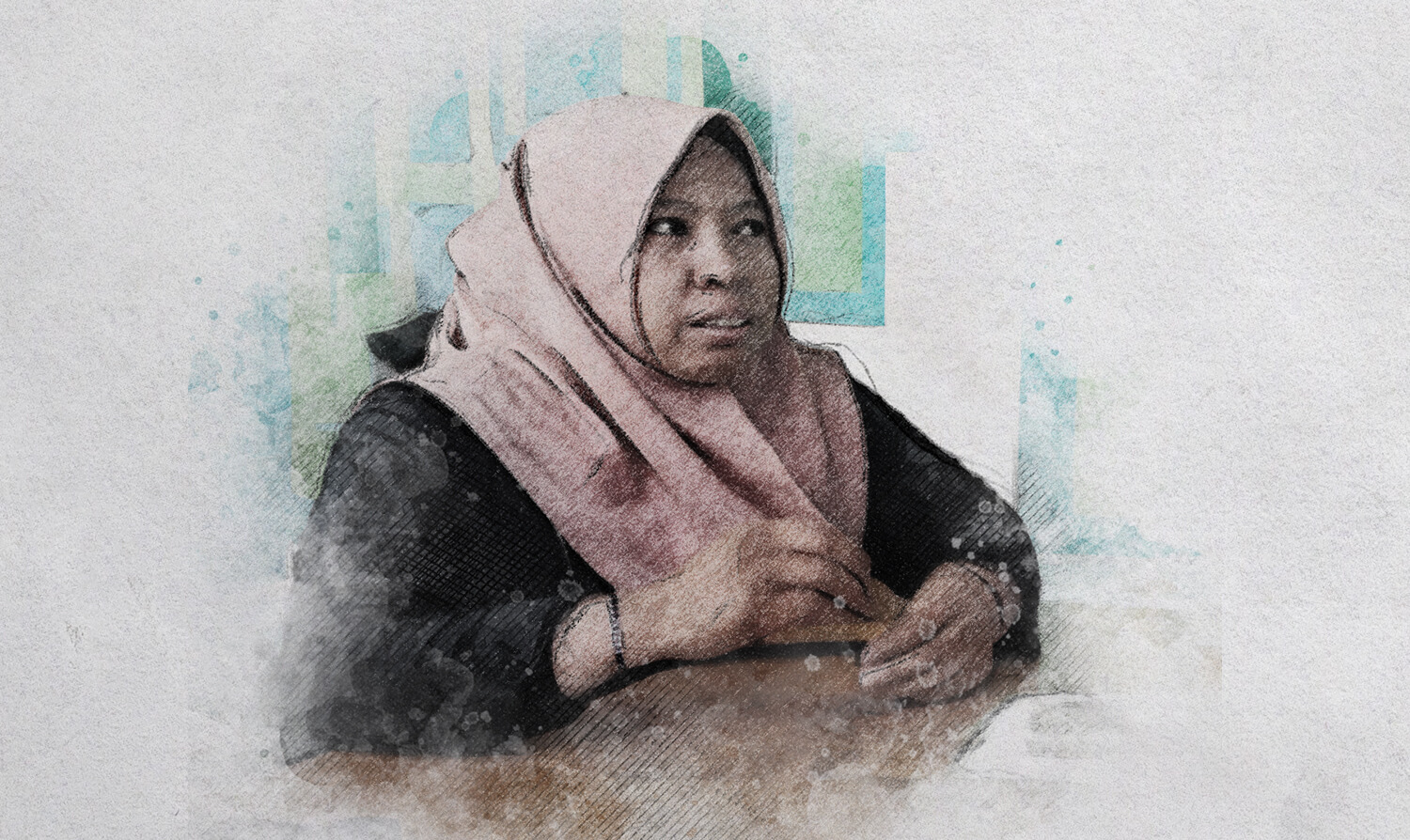
Laila
My house was relatively far from the sea. You could say it was the area where the waves stopped. At that time, I was playing at my grandmother’s house in Punge Blang, which is now the site of the Diesel Powerplant (PLTD) Apung Museum. I was only 14 years old then, still in middle school. My father worked as a woodcutter, and my mother was a housewife.
I had never heard of a tsunami before. It was never taught in school. Besides, I was still a child, so I didn’t really understand what was happening. There was no special preparation for natural disasters, including tsunamis. We never had any specific programmes, either within our family or at the village community level.
When the earthquake struck, my friends and I, who were playing, panicked and were confused. However, we thought nothing would happen. We continued playing until a little later when we heard someone shouting and running, saying that the sea was rising. At first, I was confused about what they meant. Then, my friends and I ran too along with the adults, to get away from the sea waves.
I didn’t think about saving anyone at that time. I just ran and kept running towards the mosque. Some people headed to the Quran study place. My thought, and that of others at the time, was that if we didn’t survive, at least we would die in the house of our God. At that time, some adults (the fathers) quickly directed us to enter the mosque and ordered us not to leave.
I didn’t face any significant obstacles, just fear and confusion when I first realised the sea was rising. However, from inside the mosque on the second floor, I could see people trying to save themselves from being hit by the waves; they were struck by wood and building debris. Some of them made it to the mosque where we were, but the rest were swept away and disappeared.
As people panicked and scattered to save themselves, I saw some of them fall and get trampled. Amid the chaos, I noticed a toddler sitting still. As the water got closer, a man bravely pulled the child and carried him. The child was placed on the roof of a house that happened to remain intact after being hit by the waves. After the water subsided, we learned that the child survived, though very weak.
The seawater swirled like a top from a distance, and when that whirlpool hit the coastline, it splashed large waves that engulfed settlements. The water was black and smelled terrible. I clearly remember that there were corpses everywhere. Houses were destroyed. There were so many bodies that when we walked out, we sometimes had to step on them.
While taking refuge in the mosque, we didn’t eat at all for several hours. We received food aid from Acehnese people who weren’t affected by the tsunami. The community spontaneously distributed food to us and raised aid from other areas as well.
After the tsunami, evacuation efforts were carried out together, including the government, the military, and local communities, especially for those who wanted to find their families. Public kitchens were set up at several points. Aid poured in from various parties, including from abroad. At that time, my family and I received food, clothing, and even temporary housing assistance.
I clearly remember that the process of restoring the living conditions of the community went quite well, thanks to the continuous aid we received. Economically, our situation improved year by year, although I still feel the trauma. But, on several occasions, the distribution of aid caused problems. Some victims didn’t receive houses, clothing, or other assistance simply because they were missed from the recipient list, even though they were true victims. This issue was quite common during the recovery process at that time. In fact, as far as I know, some housing assistance problems remain unresolved.
The tsunami made Aceh far more developed than before. Development has progressed well, the conflict has ended, and certainly, job opportunities have expanded compared to before the tsunami. However, in my opinion, there are still important issues that need attention, particularly concerning environmental conservation in coastal areas. Year by year, the coastline continues to encroach inland. More attention needs to be given to mangrove forests.
There’s another significant issue. Perhaps because of the abundant aid during the recovery process, people have become more pragmatic. They are not very interested in or keen on attending awareness programmes, particularly on disaster preparedness, if they don’t receive money. Even if they do participate, it’s because of the money they get. So, their attendance at disaster awareness programmes, for example, doesn’t guarantee that they genuinely understand the material.
The tsunami ultimately led me to decide to study environmental and disaster issues more seriously. That’s why I am now part of an environmental organisation. I now understand a lot about disasters, such as mitigation and evacuation. However, I still have trauma related to earthquakes to this day. I always cry when an earthquake happens. I don’t know why.
Natural disasters are very serious because they involve matters of life and death. I believe everyone must be well-prepared. I hope that what I experienced never happens again, but we never really know when it will strike. Natural disasters are indeed God’s will. However, in some cases, we can take preventive or mitigation efforts to prevent and reduce the losses that may arise if they do happen. If a disaster like an earthquake or tsunami happens again, I feel more prepared.
I think the community is now more open to information about disasters. There have been many developments in disaster infrastructure, such as the giant evacuation buildings that are now in several locations in case an earthquake or tsunami happens again. Unfortunately, those buildings are now poorly maintained and are no longer being promoted to the community. I think this is important to be revived so that people are better prepared.
Currently, there are regular awareness or simulation programmes held at least once a year. These aim to inform the public about what and how to act if a disaster occurs. Besides that, there are also special lessons about disasters in elementary schools, although it’s not yet a priority.
Yusnia
I was 29 years old then and had just started working at an insurance company. I lived with my mother and younger sibling in a house in the Lampulo area, Banda Aceh. My mother was 69 years old, while my sibling was still in school. I had no knowledge of tsunamis. There were no emergency drills. We absolutely had no preparation. Our community never thought something like that would happen. My family and I never considered the possibility of such a disaster. We knew that natural disasters existed, but we never thought it would happen in our area.
That day, I had just taken my mother to the Quran study group on a motorcycle. I was about to return home when suddenly the earthquake struck. Without thinking twice, I rushed home, but before I could reach the house, I saw people running from the direction of the coast, shouting, “The sea is rising, the sea is rising.” I didn’t know exactly what was happening. I joined in running, abandoning my motorcycle, filled with fear.
At that moment, I wasn’t thinking about anything other than saving myself. I ran along with everyone else, trying to escape the waves. The situation was terrifying, especially since we didn’t really know what was happening or what we should do. We just ran in all directions. Eventually, we took shelter on the second floor of a resident’s house.
The situation was so frightening. There are many things I remember, and all of them are horrifying. I still remember shortly after the earthquake, the sea level rose, and the waves were pitch black and smelled awful. As the waves chased us, I saw an old man being swept off his motorcycle and thrown into a roadside ditch. The old man was trapped, and his motorcycle fell on top of him. He cried out for help, but no one paid attention. Everyone was focused on saving themselves.
People were in a state of panic; some even had their clothes torn off by the waves. They were trying to find anything to cover themselves. I saw dead bodies everywhere, including a floating baby. I couldn’t hold back my tears.
Another thing I remember clearly is the moment I found my mother, who had survived the tsunami. She held onto a mango tree, clutching a Quran. For me, that was a sign of God’s power that I will never forget.
It was only after the waves had subsided that a few brave individuals decided to come down and help those who were still alive. They waded through the black, foul-smelling seawater to save people who were still trapped in trees, wood, and other debris.
We couldn’t eat while we were in that second-floor house. Everything was destroyed and submerged in water. It was not until the afternoon that we got food. The fastest aid came from Acehnese people who weren’t affected by the tsunami and from some people from other regions, like Medan. I remember receiving bread. Because our area was still flooded, food couldn’t be distributed properly, so it was thrown to us from below.
Our house was destroyed. We lost many things, both property and family. We tried to rebuild with the help that poured into Aceh. It was very helpful, including assistance with housing, clothing, food, and other necessities. Alhamdulillah, our situation has improved since then. I still work at the same insurance company, and my mother is still healthy. However, the incident has left me with a fear of the sea. I haven’t been to the beach since the tsunami. In fact, I’m afraid to get on a boat. The dark memories have left a trauma that lingers to this day.
For me, the tsunami changed many things in the lives of Acehnese people. The economy improved, housing aid was provided, and infrastructure developed rapidly. Not to mention, at that time, there was still a conflict between the Free Aceh Movement (GAM) and the Indonesian government. The tsunami brought an end to that terrifying conflict with a peace agreement.
I’m still scared that a disaster like that could happen again. I believe that everything happens according to God’s will. Therefore, the most important thing for me is to strengthen my faith.
The great wave destroyed everything. Now, I avoid the sea as much as possible, including choosing a place to live far from coastal areas.
If a similar disaster does occur, at least we now know what to do and where to go: away from the sea and to higher ground. This is based on my own experience.
Interviewed and translated by UNDP on 25 July 2024 for the official joint ASEAN-UNDP publication on the 20th anniversary of the Indian Ocean Tsunami. The publication will be published in December 2024. These narratives were edited and condensed by The ASEAN editorial team for this special issue.
